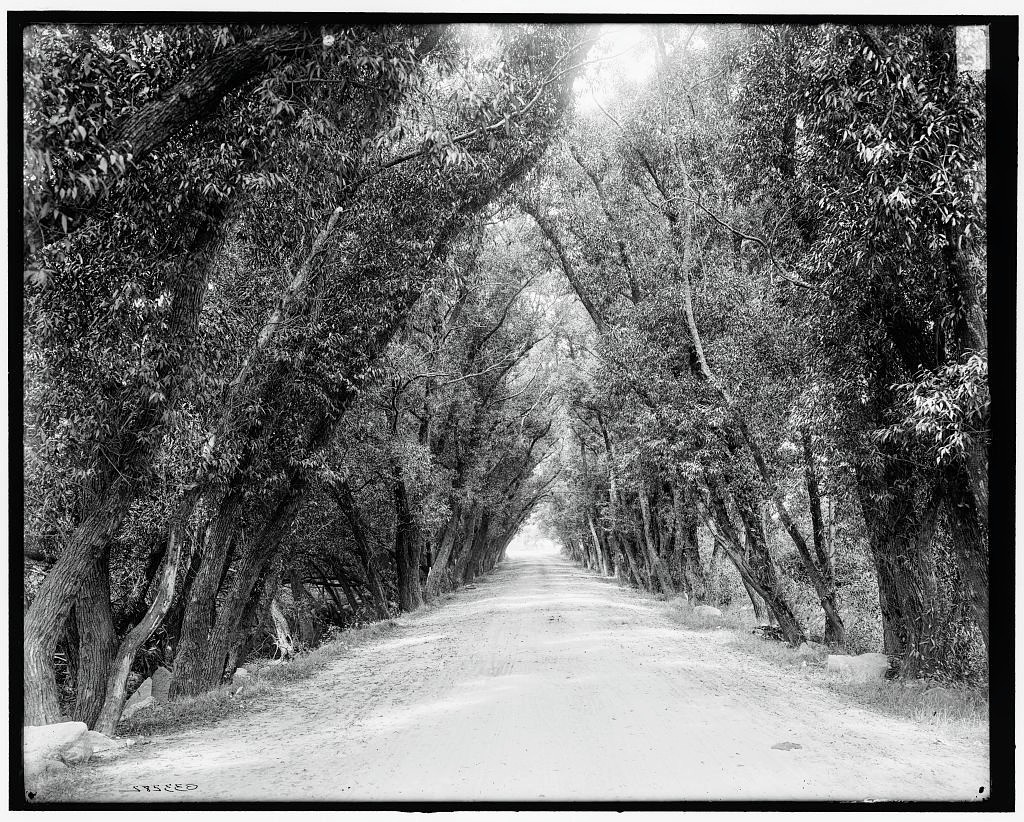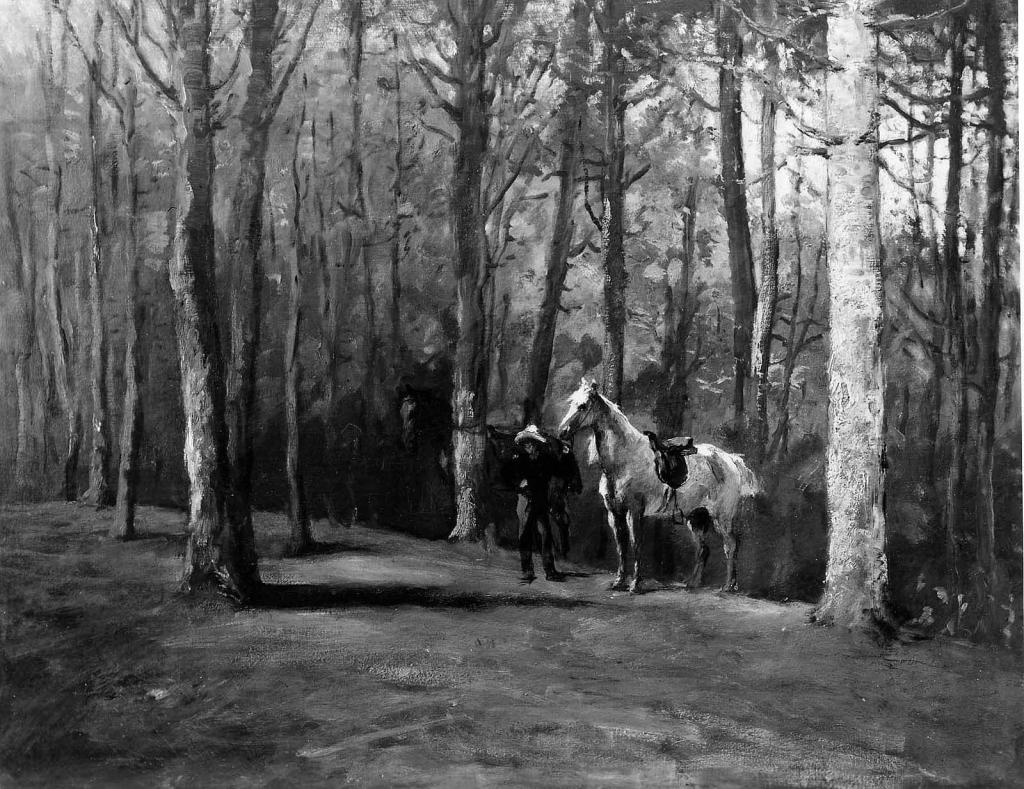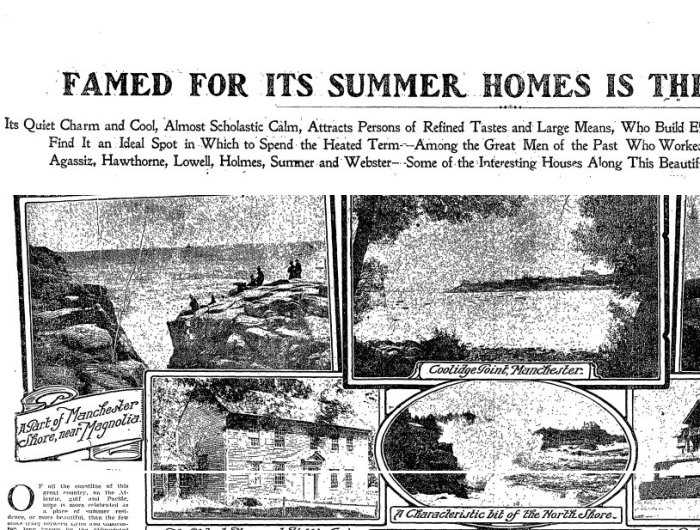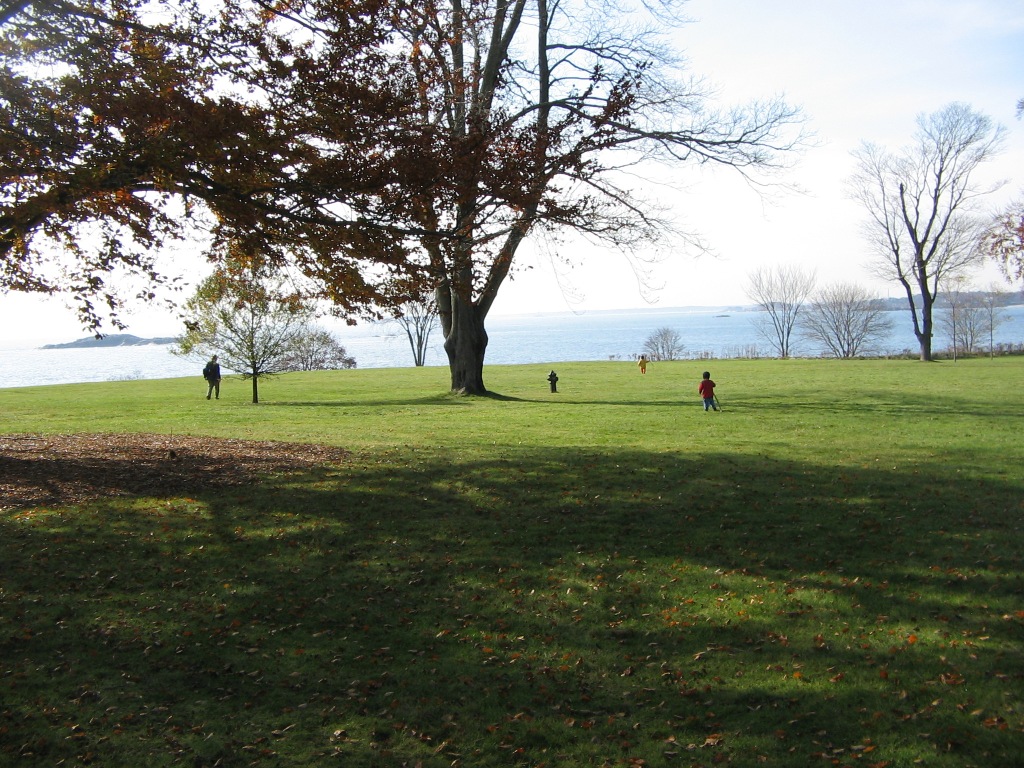
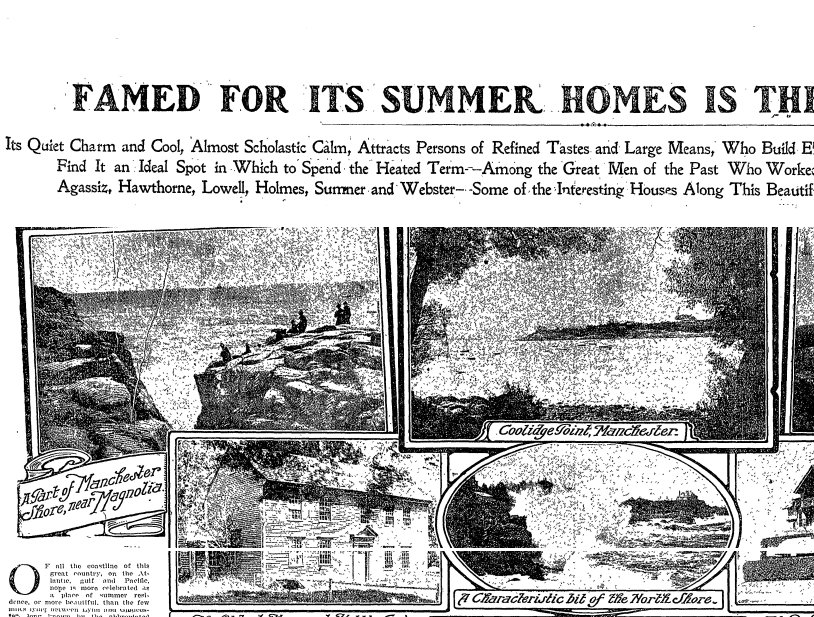
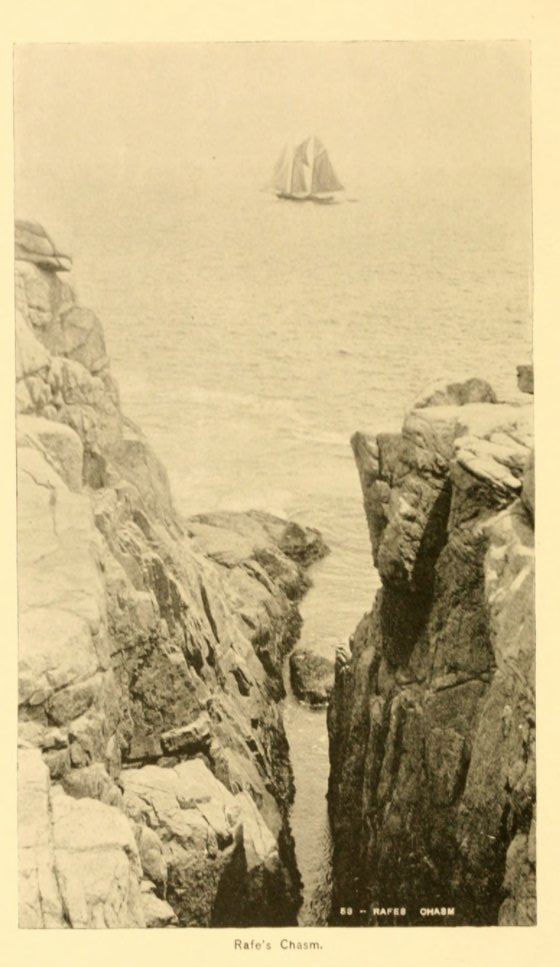
photo: Clarence Manning Falt 
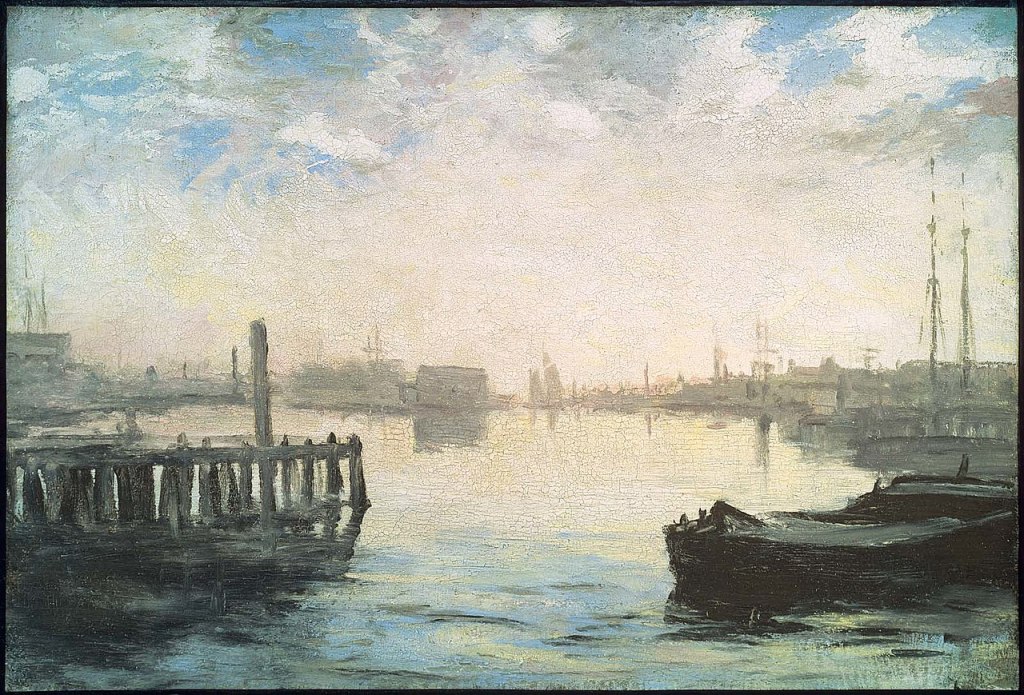
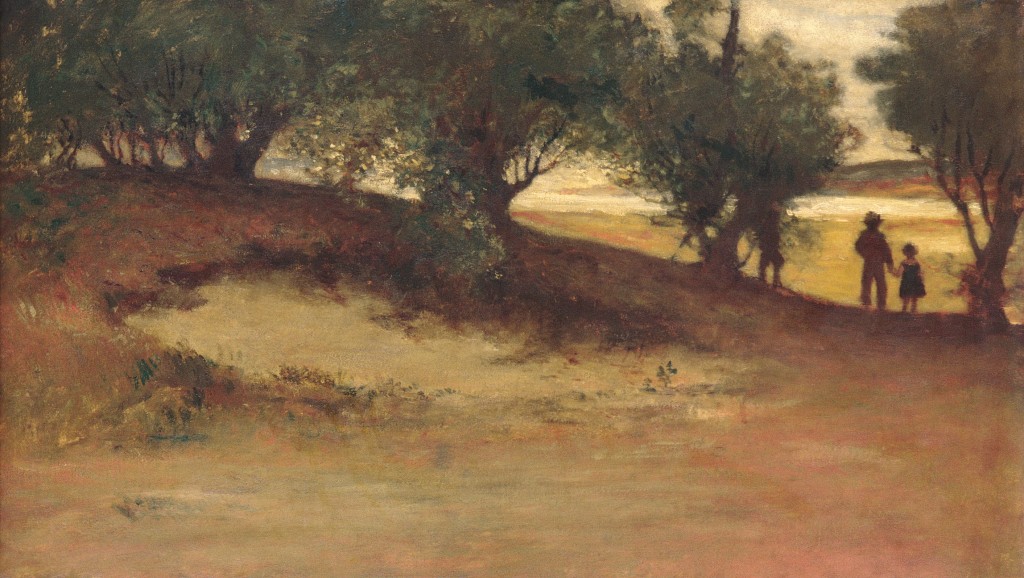
According to the Boston Globe article from 1904, Delia Tudor was the first summer resident of the North Shore, who went to Nahant in 1820. It took until 1840 for arrivals in Beverly.
Mostly the article covers Swampscott, Nahant, Manchester and Gloucester tony neighborhood of Magnolia.
Longfellow (his home in Nahant burned by the time of the article) and Hawthorne (Swampscott) were here visiting the North Shore. “To the North Shore also came Lowell and Daniel Webster–despite his fondness for the South shore–Charles Sumner and Rufus Choate. The list, in fact, of masters of the mind who have worked, played and rested along the North Shore is a very long one.”
Excerpt about Magnolia | Gloucester
“Kettle Cove, Magnolia, which took its early name from the formation of the coast, joins Manchester. It is one of the most beautiful spots of the beautiful North shore, and , like many other localities thereabouts, has a witch legend connected with its history. Kettle Cove was settled in 1645, and was under the jurisdiction of Salem. in 1838 there were 14 houses in the cove, and a small schoolhouse, which was used for religious purposes whenever a minister chanced to come that way. it was here that the artist Hunt established his studio, and old barn, calling it the Hulks. In this vine covered studio some of his most famous pictures were painted including, The Headsman, Tom in a Felt Hat, and Gloucester Harbor. Near here is Rafe’s Chasm, where one may find an iron cross marking the place where Martha Marlon a young girl was drowned many years ago…
“The fashionable world has found these shores, and handsome summer homes now rise at every vantage point.”
Boston Globe 1904
scenic photos illustrating the article include:
- “A Part of Manchester Shore, Near Magnolia” also known as Rafe’s Chasm
- The Oldest House at Kettle Cove, Manchester, built in 1700
- The Dana House, Magnolia
photos: Coolidge Point, Kettle Cove vista; Rafe’s Chasm by Falt; William Morris Hunt (1824-1879)- paintings mentioned in article and Willow Cottage. A Boston painter who studied with Millet, Hunt held plein air art classes –in Magnolia –in 1876. (old Kettle Cove village became ‘Magnolia’.) He transformed the barn into his studio in 1877.
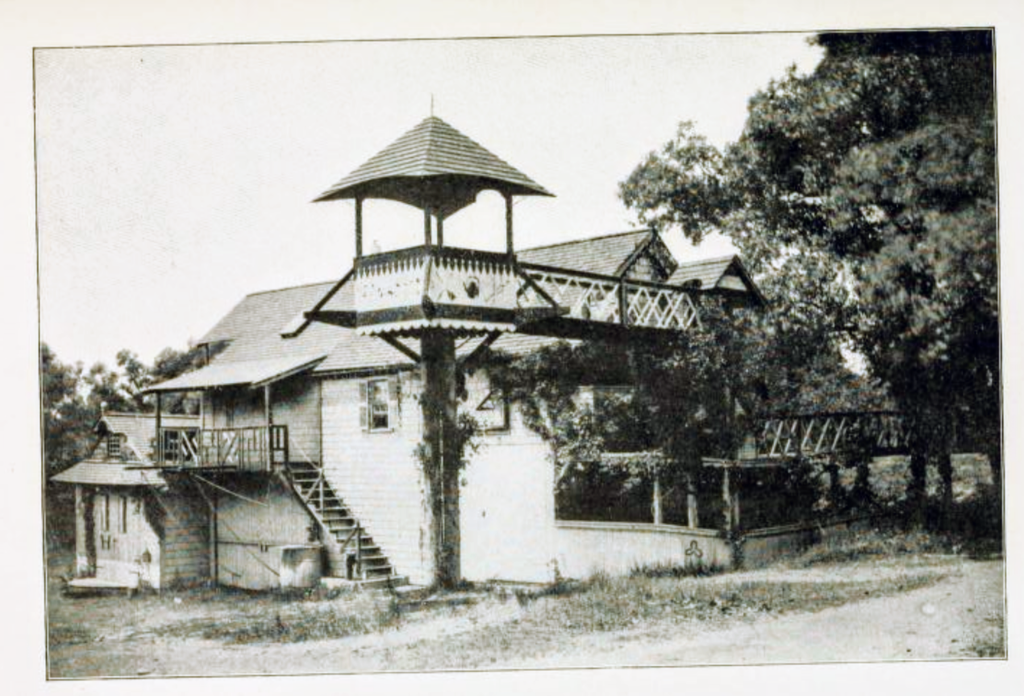
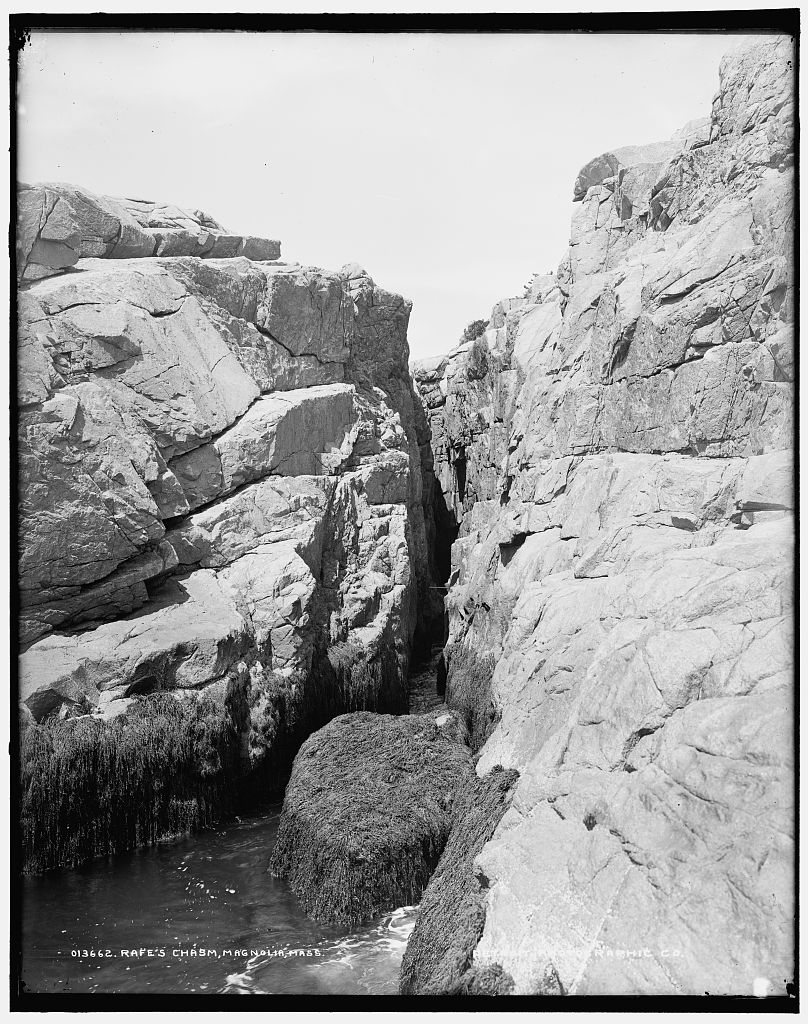
“The scenery combined much sketching material in a little space. In addition to a small beach there was a rocky shore of much boldness, and the cliffs were surmounted by well-wooded groves. One of its charms was a willow-road of rare picturesqueness, and there was a graceful variety of hill and dale. The fishermen at their work, the simple cottage folk, and a few artists were the only people to be seen. In less than ten years the place became a fashionable resort, and its artistic interest was gone.”
Helen Mary Knowlton, Hunt biography,1899
